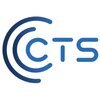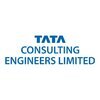Filter interviews by
RUNGTA Diploma Electrical Engineer Interview Questions and Answers
RUNGTA Diploma Electrical Engineer Interview Experiences
1 interview found
I applied via Company Website and was interviewed in Apr 2023. There were 2 interview rounds.

(4 Questions)
- Q1. 1- What is transformer?
- Ans.
A transformer is an electrical device that transfers electrical energy from one circuit to another through electromagnetic induction.
Transformers are used to change the voltage level of an alternating current (AC) power supply.
They consist of two coils of wire, known as the primary and secondary windings, wrapped around a magnetic core.
When an AC voltage is applied to the primary winding, it creates a magnetic field th...
- Q2. Ans- Transformer is an electrical device which is transfer energy from one circuit to another circuit without changes of frequency.
- Q3. 2- Types Of motor?
- Ans.
There are two main types of motors: AC motors and DC motors.
AC motors are powered by alternating current and are commonly used in household appliances and industrial machinery.
DC motors are powered by direct current and are commonly used in electric vehicles and robotics.
Other types of motors include stepper motors, servo motors, and linear motors.
Stepper motors are used in precision control applications, while servo m...
- Q4. Ans- 3 types of motor having in electrical system. A. Synchronous motor B. Asynchronous motor (Induction Motor) C. Special Motor Asynchronous motor:- a. Squirrel Cage induction motor b. Slip ring Inductio...
- Ans.
There are three types of motors in electrical systems: synchronous, asynchronous (induction), and special motors.
Asynchronous motors include squirrel cage and slip ring induction motors.
Special motors include universal, stepper, brushless DC, and servo VFD motors.
Synchronous motors are used in applications where constant speed is required, while asynchronous motors are used in most industrial applications.
Special motor...
Top trending discussions






Interview questions from similar companies

Diploma Electrical Engineer Interview Questions & Answers
Megha Engineering & Infrastructuresposted on 28 Oct 2023

(9 Questions)
- Q1. DG other questions
- Q2. Transformer other questions
- Q3. Relays othee questions
- Q4. Circuit breaker other questions
- Q5. Power transformer
- Q6. Motors other questions
- Q7. Grid station other
- Q8. Rectifier Transformer other questions
- Q9. Distribution transformer , crrrent transformer potential Transformer power plant
Rectifier Generator protection

Diploma Electrical Engineer Interview Questions & Answers
Megha Engineering & Infrastructuresposted on 30 Nov 2023
I applied via Naukri.com and was interviewed in Oct 2023. There were 2 interview rounds.

(7 Questions)
- Q1. What are type of transformer ?
- Ans.
There are several types of transformers used in electrical engineering.
Power transformers
Distribution transformers
Instrument transformers
Auto transformers
Isolation transformers
Step-up transformers
Step-down transformers
- Q2. How many earthing required for commencing a transformer
- Ans.
The number of earthing required for commencing a transformer depends on the type and size of the transformer.
The number of earthing required for a transformer depends on its rating and the local electrical regulations.
In general, a single earthing electrode is sufficient for small transformers with ratings up to a few hundred kVA.
For larger transformers, multiple earthing electrodes may be required to ensure proper gro...
- Q3. What is silika gel
- Ans.
Silica gel is a desiccant commonly used to absorb moisture and prevent the growth of mold and mildew.
Silica gel is a porous form of silicon dioxide.
It is often found in small packets or sachets.
It is used in various industries such as electronics, pharmaceuticals, and food packaging.
Silica gel can absorb moisture up to 40% of its own weight.
It is non-toxic and chemically inert.
Common uses include preserving the freshne...
- Q4. What is vcb? Whwere it is installed
- Ans.
VCB stands for Vacuum Circuit Breaker. It is a type of electrical switchgear used for protecting electrical circuits from overloads and short circuits.
VCB uses vacuum as the arc quenching medium instead of oil or air.
It is installed in high voltage power systems, such as substations and power plants.
VCBs are commonly used in distribution networks, generator circuits, and transformer circuits.
They provide reliable and e...
- Q5. What is the acceptable current for human ?
- Ans.
The acceptable current for humans depends on various factors such as duration, frequency, and pathway.
The acceptable current for humans is typically below 1 mA for low-frequency currents.
For high-frequency currents, the acceptable current is lower, usually below 0.1 mA.
The duration of exposure also plays a significant role in determining the acceptable current.
The pathway of the current through the body, such as hand-t...
- Q6. What is alternator?
- Ans.
An alternator is an electrical machine that converts mechanical energy into electrical energy.
An alternator is commonly used in vehicles to charge the battery and power the electrical system.
It operates on the principle of electromagnetic induction.
Alternators produce alternating current (AC) which is then converted to direct current (DC) using rectifiers.
They consist of a rotor, stator, and diodes.
The rotor is driven ...
- Q7. What is ct transformer
- Ans.
A CT transformer, also known as a current transformer, is an electrical device used to measure alternating current (AC) by stepping down the current to a lower value.
CT transformers are commonly used in power systems to measure high currents without directly connecting measuring instruments to the circuit.
They consist of a primary winding, which carries the current to be measured, and a secondary winding, which is conn...
Interview Preparation Tips
- Electrical Engineering
- Electrical Maintenance
- Electrical Works
Skills evaluated in this interview

Electrical Engineer Interview Questions & Answers
Shapoorji Pallonji Groupposted on 18 Oct 2021
I appeared for an interview before Oct 2020.
Interview Questionnaire
2 Questions
- Q1. About operations and maintenance of electrical equipment
- Q2. I would like to draw your attention to my interview
Interview Preparation Tips

I applied via Naukri.com and was interviewed in Jan 2021. There was 1 interview round.
Interview Questionnaire
1 Question
- Q1. Electrical Safety ?
Interview Preparation Tips

I applied via Naukri.com and was interviewed in Oct 2021. There were 3 interview rounds.

(1 Question)
- Q1. Where do you see yourself in 5 years?
Interview Preparation Tips

Executive Engineer Interview Questions & Answers
Megha Engineering & Infrastructuresposted on 27 Oct 2021
Interview Questionnaire
1 Question
- Q1. Do you know bbs
- Ans.
Yes, BBS stands for Bar Bending Schedule which is a document that provides details of reinforcement steel required for construction.
BBS is used in construction to ensure the reinforcement steel is placed correctly.
It includes details such as the diameter and length of each steel bar.
BBS is important for ensuring the structural integrity and safety of a building.
Software programs are available to assist with creating BB...
Interview Preparation Tips

Project Engineer Interview Questions & Answers
CTS Consulting & Technical Supportposted on 21 Apr 2023
I applied via Walk-in and was interviewed before Apr 2022. There were 3 interview rounds.

It was basic level coding question. you can answer if you strong in basic level of java
(1 Question)
- Q1. Why CTS? are u willing to work in any location? expected salary?

Project Engineer Interview Questions & Answers
Shapoorji Pallonji Groupposted on 8 Jul 2024
(2 Questions)
- Q1. How to calculated pump head
- Ans.
Pump head is calculated by adding the static head, friction head, and velocity head.
Calculate the static head by measuring the vertical distance between the pump centerline and the highest point of the system.
Calculate the friction head by considering the pipe length, diameter, roughness, and flow rate.
Calculate the velocity head by using the formula: V^2 / (2g), where V is the velocity of the fluid and g is the accele...
- Q2. How to oprate the fire alaram system
- Ans.
To operate the fire alarm system, follow these steps: activate the alarm, evacuate the building, and wait for emergency responders.
Activate the fire alarm by pulling the nearest alarm pull station or pressing the alarm button.
Evacuate the building immediately using the nearest exit and do not use elevators.
Wait for emergency responders to arrive and provide them with any relevant information about the situation.
Interview Preparation Tips

Executive Engineer Interview Questions & Answers
Megha Engineering & Infrastructuresposted on 22 Jan 2023
I applied via Company Website and was interviewed in Dec 2022. There were 3 interview rounds.

(1 Question)
- Q1. About technical question abot francis turbine and all welding works related fabrication works..
- Ans. I have worked in around 2 yrs. in francis turbine almost 70-80 percent of francis turbine errection and alignment was learned.. and drawing study also.. good about the turbine.. and also all general and regular fabrication works also known.. penstock liner fab. with 7.5 dia pipe line fab. and errection. skills.. also i have..
(2 Questions)
- Q1. What was ur past experiencee
- Ans. 2 years.. and more than two years
- Q2. What was ur qualification?
- Ans. Diploma and completing b tech with same at a time parallel to the experience..
Interview Preparation Tips
RUNGTA Interview FAQs
Tell us how to improve this page.
Interview Questions for Popular Designations
- Diploma Mechanical Engineer Interview Questions
- Diploma Trainee Engineer Interview Questions
- Diploma Civil Engineer Interview Questions
- Diploma Electronics Engineer Interview Questions
- Diploma Apprentice Trainee Interview Questions
- Diploma Chemical Engineer Interview Questions
- Diploma Automobile Engineer Interview Questions
- Diploma Engineer Trainee - DET Interview Questions
- Show more
RUNGTA Diploma Electrical Engineer Interview Process
based on 1 interview
Interview experience
Interview Questions from Similar Companies

Megha Engineering & Infrastructures

Shapoorji Pallonji Group

Alstom Transportation

Tata Technologies
- Home >
- Interviews >
- RUNGTA Interview Questions >
- RUNGTA Diploma Electrical Engineer Interview Questions








